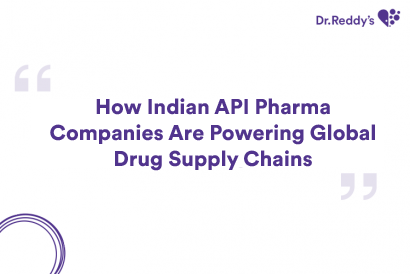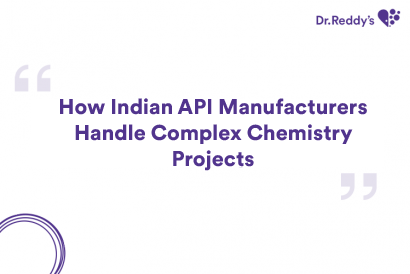7 Ways how Active Pharmaceutical Ingredients (APIs) Enable Indian Pharmaceutical Companies to Grow
Global pharmaceutical markets faced major discontinuities and are constantly adjusting to the diverse global challenges faced during the Covid-19 pandemic. While growth in developed markets has been slowed down during this period, emerging markets are expected to become increasingly important in the coming decade, with pharma API companies in India spearheading this growth.
Indian pharmaceutical companies are expected to grow robustly as sales have normalized after the previous year's pandemic. Because of the increase in the demand for Covid-19- related drugs, the exports have further escalated by 18 percent. Active pharmaceutical ingredient (API) is an important segment of the Indian pharma industry, contributing to around 35 percent of the market. On average, API market in India contribution to the overall cost is approximately 40 percent. Still, it may go up to 70–80 percent in some instances, depending on the prevailing API prices [1].
The Indian API industry has been garnering a lot of attention globally due to:
The Good Quality of APIs:
With the escalating demand for low costing generics and impending innovations for the new generation of APIs, an added advantage is an evolved chemical industry and skilled workforce coupled with stringent quality and manufacturing standards.
Supply Chain Disruptions:
Supply chain disruptions led various major pharmaceutical countries to reshuffle their API import sources. Since many countries are inclined towards local formulations and generics, India has a tremendous opportunity to position itself as one of the largest API suppliers globally.
Drug Patents:
Due to the expiry of the patent drugs across the globe, there is an immense value of drugs going off-patent in the next five years and the ability to leverage the opportunity available for Indian pharma companies. Furthermore, ebbing regulatory risks, adopting various strategies to de-risk from dependency on other countries for key raw materials, the increasing trend in PE investments, and solid industry fundamentals will further enable the growth of the pharmaceutical industry, especially APIs.
Aging Population:
The rise in the aging population is one of the primary drivers of the pharmaceutical API manufacturing market. As the aging population increases, the demand for pharmaceutical drugs also increases. API is a specialty drug in these medicines to cure a particular disease. Therefore, this increased demand for pharmaceutical drugs significantly impacted the pharmaceutical API manufacturing market growth.
Penetration into Regulatory Markets:
The expected rise in penetration of Indian API players in regulated markets - Major companies are developing advanced technologies, receiving approvals from regulatory bodies, and launching new products to stay competitive. In addition, other inorganic growth strategies include mergers & acquisitions, research collaborations, joint ventures, and new product developments to sustain themselves amidst fierce competition. As a result, API's exports are likely to grow mainly driven by exports to regulated markets and continued growth in the semi-regulated markets.
Outsourcing:
The need for global pharmaceutical players to outsource API manufacturing to cut costs - India's active pharmaceutical ingredients (APIs) market is one of the fastest-growing sectors in India. According to the U.S. Food and Drug Administration, by 2022, India's API industry will be worth about $4.3 billion.
With more companies outsourcing their manufacturing to India, API consumption will likely grow at a CAGR of around 15 percent over the next five years. In addition, with more pharmaceutical companies choosing to outsource the development and manufacture of small-molecule active pharmaceutical ingredients (APIs), the demand for API contract manufacturing organizations (CMOs) has significantly grown.
Foreign Investments:
With the rise of several global clients relocating a part of their business away from China and India's need to localize, giving that shift further momentum, many foreign pharmaceutical companies are moving into India or significantly increasing their presence.
To conclude - The growth of the Indian API industry is primarily fueled by the rise in the aging population, increasing occurrences of chronic diseases, technological advances in API manufacturing, and implementation of artificial intelligence-based drug discovery instruments.
In addition, the API market in India is expected to witness steady growth on account of developments and improvements in the government's national healthcare programs, increasing innovative drugs, decreasing the cost of generic drugs, and several other factors. Moreover, increased use of highly potent active pharmaceutical ingredients (HPAPIs), an industry trend that current circumstances have bolstered, will further intensify the need.
References:
- Call us:
 +91 40 49002253
+91 40 49002253
Contact Us
Rellene el siguiente formulario y nos pondremos en contacto con usted a la brevedad.





